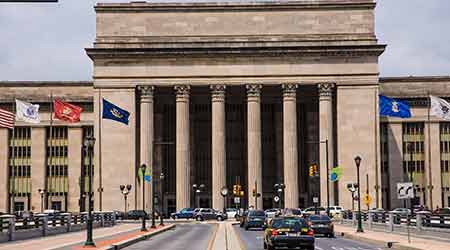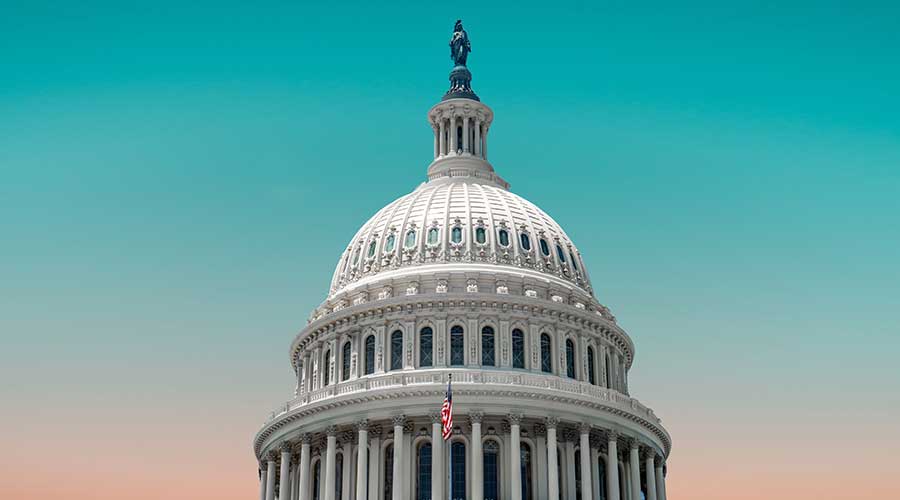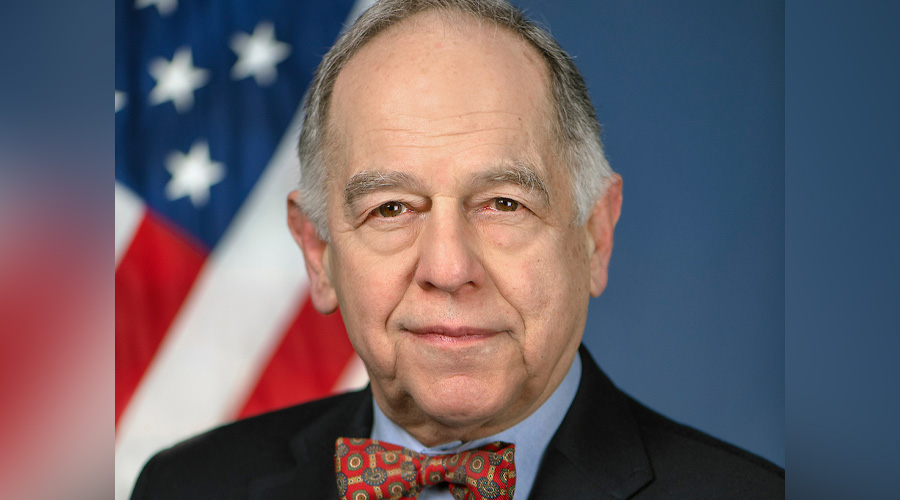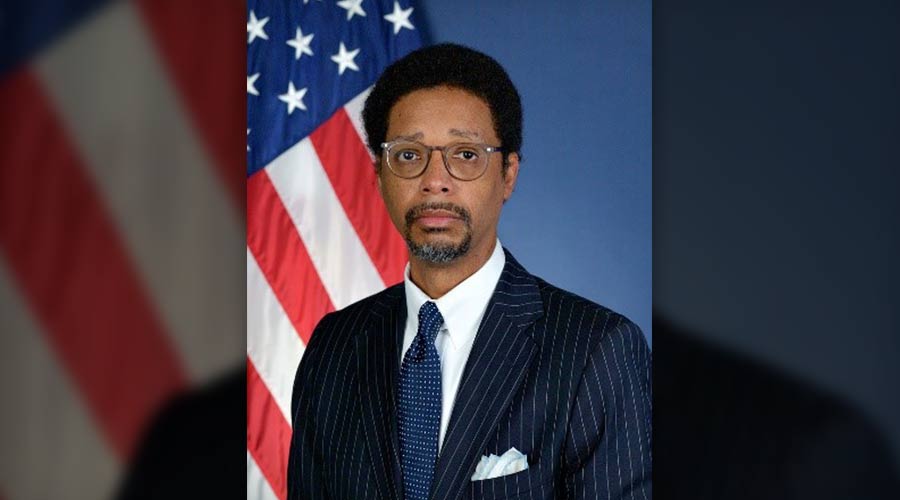Stay updated on news, articles and information for the rail industry
January 2019
Rail News: Federal Legislation & Regulation
A closer look at FY2018 BUILD grant-funded projects

Compiled by Julie Sneider, senior associate editor
Last month, the U.S. Department of Transportation (USDOT) announced nearly $1.5 billion in fiscal-year 2018 Better Utilizing Investments to Leverage Development (BUILD) grant awards.
BUILD was previously known as the Transportation Investment Generating Economic Recovery (TIGER) program. Ninety-one projects were awarded funds in 49 states and the District of Columbia.
Of the $1.5 billion, 66 percent — or $977 million — went to projects that have a freight component, according to the Coalition for America's Gateways & Trade Corridors (CAGTC). Non-highway freight projects received 20 percent of the total funds, coalition officials said in a press release.
The grant dollar amount established "a new high for the percentage of funding awarded to freight infrastructure, besting a previous record set earlier in 2018 by TIGER IX, which awarded 56 percent of total funds for goods movement infrastructure," CAGTC officials said.
Thirteen percent ($195 million) of BUILD dollars were allocated to public transportation projects in the states of California, Connecticut, Florida, Iowa, Illinois, North Carolina, New Mexico, Nevada, Ohio, Oklahoma, Pennsylvania and Texas, and in D.C.
Since the grant program began as TIGER in 2009, public transit projects have received an average of 29 percent of annual grant funds, according to the American Public Transportation Association (APTA).
Total BUILD funding in FY2018 was up significantly from FY2017, in part because of discretionary appropriation increases allowed by the February 2018 bipartisan budget deal, according to Jeff Davis, senior fellow and editor of Eno Transportation Weekly. The program's funding will likely shrink somewhat this year compared with last year, Davis wrote in a year-end column.
Following is a summary of projects with rail components that were awarded FY2018 BUILD grants. The information, which was provided by USDOT, includes the project name, applicant, location, grant amount, total project cost and a description.
• Better Market Street Phase I, city and county of San Francisco, $15 million grant, $80.7 million project, San Francisco. The project, which calls for roadway improvements on Market Street, includes streetcar track replacement and a new F-line streetcar turnaround loop at McAllister and Charles J. Brenham streets.
• Stamford Transportation Center Escalator and Elevator Improvement, Connecticut Department of Transportation, $9.16 million grant, $22.9 million project, Stamford. The project calls for bringing the existing antiquated system into a state of good repair and reducing the frequency of elevator and escalator service outages. The improvements will provide more reliable service to the nearly 9 million Amtrak and MTA Metro-North Railroad passengers that use the center annually.
• Metrorail Station Platform Reconstruction, Washington Metropolitan Area Transit Authority, $20 million grant, $185.6 billion project, D.C. and northern Virginia. The project will address current and projected vulnerabilities of the existing station platforms, including replacing deteriorated concrete structures and pedestrian surfaces.
• Springfield Rail Improvements-Usable Segment IV, city of Springfield, $22 million grant, $44 million project, Springfield, Illinois. The project is part of a larger effort to relocate the existing Amtrak/Union Pacific Railroad corridor to a new expanded corridor adjacent to existing Norfolk Southern Railway tracks. Segment IV involves replacing the existing single-track bridge with two double-track bridges over Fifth and Sixth streets to accommodate the expanded corridor.
• Des Moines Transload Facility, Des Moines Area Metropolitan Planning Organization, $11.2 million grant, $15.6 million project, Des Moines, Iowa. The project calls for developing a facility that will allow for the direct movement of goods via rail to reduce the number of heavy trucks traveling on local roadways.
• Western Massachusetts Freight-Rail Upgrade, Massachusetts Department of Transportation, $10.8 billion grant, $30 million project, located from Monson to Northfield, Massachusetts. The project calls for upgrading a section of New England Central Railroad track to meet the 286,000-pound national standard for rail cars and to allow trains to travel at a higher speed on the line.
• North Terminal Extension, New Bedford Harbor Development Commission, $15.4 million grant, $34.4 million project, New Bedford, Massachusetts. The project includes the extension of three rail spurs to increase multimodal operations.
• Carbide Dock Port Rail Rehabilitation and Truck Route Reconstruction, city of Sault Ste. Marie, $20.7 million grant, $21.7 million project, Sault Ste. Marie, Michigan. The project calls for rehabbing the Carbide Dock Port, which is currently in a state of disrepair.
• Sedalia Industrial Park Rail Spur, city of Sedalia, $10 million grant, $10 million project, Sedalia, Missouri. The project calls for construction of a rail spur in the industrial park, including 11,900 feet of new track and a new wye connection to an existing siding.
• SEMO Port Loop Track Terminal, Southeast Missouri Regional Port Authority, $19.8 million grant, $33 million project, Scott City, Missouri. The project calls for construction of a new rail barge terminal that consists of a loop track for the accommodation of unit trains, a rail-to-barge conveyor system for rapid unloading and product transfer, and a river barge load-out terminal.
• Appalachian NGL Hub Rail Transloading Facility, Monroe County, $20 million grant, $60 million project, Hannibal, Ohio. The project calls for building a pipeline-to-rail transload facility at an energy terminal.
• Port of Muskogee Rail Access, Muskogee City-County Port Authority, $5.8 million grant, $11.6 million project, Muskogee, Oklahoma. At the Port of Muskogee, rail and road access improvements will be completed, including track upgrades, expansion and realignments to meet current Class I safety standards. In addition, a Highway 16 grade crossing will be modernized and 9,700 feet of track will be added to an existing marshalling yard.
• Columbia River Barge Terminal Rail Access, Port of Morrow, $19.4 million grant, $25.96 million project, Morrow County, Oregon. The project involves establishing rail-to-barge transloading capability within the port's barge terminals on the Columbia River. Improvements include a mainline switch, construction of 11,140 feet of rail line, three rail switches, a Terminal I crane and improvements, upgrades to Ullman Bridge and construction of Marine Drive bridges.
• Coos Bay Rail Line Bridge Rehabilitation, Oregon International Port of Coos Bay, $20 million grant, $25 million project, Coos Bay, Oregon. The project calls for improvements to or replacements of 15 bridges along the Coos Bay Rail Line.
• 30th Street Station Transformation, Southeastern Pennsylvania Transportation Authority (SEPTA), $15 million grant, $38.8 million project, Philadelphia. The project will expand the station capacity and improve connections between SEPTA and Amtrak. The station is the third-busiest in the United States and serves as a connection between Amtrak, SEPTA, New Jersey Transit and intercity bus routes.
• Upstate Express Corridor Capacity Expansion, South Carolina Department of Transportation, $25 million grant, $51.1 million project, Greer, South Carolina. The project aims to shift freight transport from truck to rail. Freight-rail infrastructure improvements will include expanding the Inland Port Greer, extending the port's lead track and lengthening the Carlisle passing siding to 15,100 feet.
• Multimodal On-Dock Rail, Port of Port Arthur Navigation District, $20 million grant, $55 million project, Port Arthur, Texas. The project includes modifying and expanding the existing rail system to provide a direct connection between the existing rail spur and the dock tracks at Berth 5 and a future Berth 6.
• Vermont Regional Freight-Rail Corridor Upgrade, Vermont Agency of Transportation, $20 million grant, $31.9 million project, southwest Vermont. The project involves rehabbing or replacing 31 railroad bridges along 53 miles of track on the Vermont Railway's western corridor to support the national carload weight standard of 286,000 pounds.
• Virginia Inland Port Terminal Optimization and Grade Separation, Virginia Port Authority, $15.5 million grant, $26.5 million project, Front Royal, Virginia. The project will include the grade separation of a crossing to reduce the risk of train-vehicle accidents and help improve emergency response time by removing crossing delays.
• Washington State Rural Rail Rehabilitation, Washington State Department of Transportation, $5.6 million grant, $11.3 million project, Whitman, Spokane and Lincoln counties. Improvements will be made to three branch lines for the Palouse River and Coulee City Railroad to support 286,000-pound rail cars. Work will include replacing or rehabbing 10 bridges, replacing 4.6 miles of rail and rehabbing 16.3 miles of track.
Keywords
Browse articles on U.S. Department of Transportation USDOT BUILD discretionary grants FY2018 Better Utilizing Investments to Leverage Development Transportation Investment Generating Economic Recovery TIGER Coalition for America's Gateways & Trade Corridors American Public Transportation Association APTAContact Progressive Railroading editorial staff.


 LRW Honors Amtrak’s Acheson As Railway Woman Of The Year
LRW Honors Amtrak’s Acheson As Railway Woman Of The Year
 From Editor-In-Chief Foran: Of Gender Equity And Inclusion
From Editor-In-Chief Foran: Of Gender Equity And Inclusion
 Spotlight On Some Of Today’s Rail Safety Products
Spotlight On Some Of Today’s Rail Safety Products
 Women of Influence in Rail eBook
Women of Influence in Rail eBook
 railPrime
railPrime







